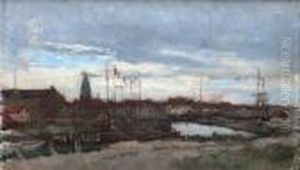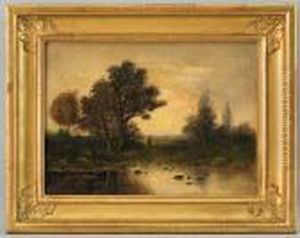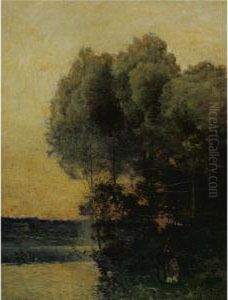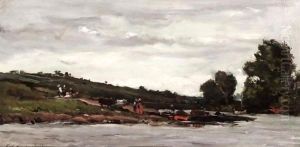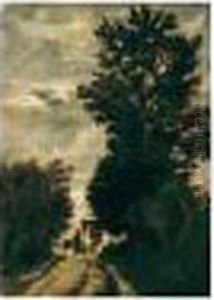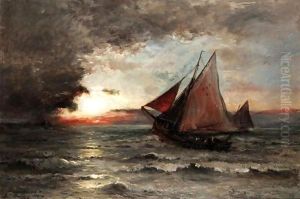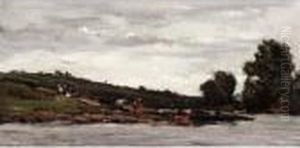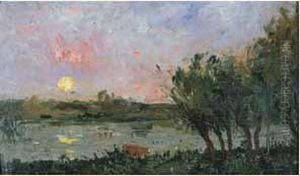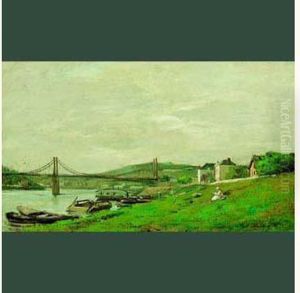Karl Pierre Daubigny Paintings
Karl Pierre Daubigny, also known as Carl Pierre Daubigny, was a French painter and the son of the well-known artist Charles-François Daubigny, a central figure in the Barbizon school and a precursor of the Impressionist movement. Born in Paris on March 26, 1846, Karl was exposed to art and its environments from a very young age, thanks to his father's prominent artistic career.
Karl showed an early talent for art and received guidance from his father and probably other Barbizon painters. His style was influenced by the naturalistic approach of the Barbizon school, which emphasized painting nature directly from life ('en plein air') and was a reaction against the formalism of the academic painting of the time.
Despite his father's fame, Karl Pierre Daubigny worked to establish his own artistic identity. He often painted river scenes and landscapes, subjects that were also favored by his father. His works are characterized by a sensitivity to light and atmosphere, which he rendered with a delicate and fluid touch. Like his father, Karl painted many scenes along the banks of the River Oise, capturing the changing moods of the river and the beauty of the French countryside.
Karl Pierre Daubigny's life and career were cut short when he died on May 28, 1886, at the age of 40. Though he died young, his works continue to be appreciated for their contribution to the naturalist movement in art, and they can be found in various art collections and museums. His legacy is somewhat overshadowed by the towering figure of his father, but he is still recognized as a skilled practitioner of the Barbizon school's principles and an early participant in the movements that would eventually lead to Impressionism.




























